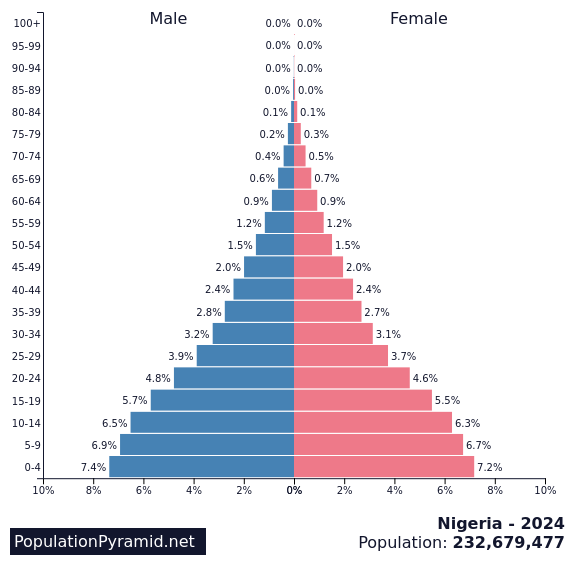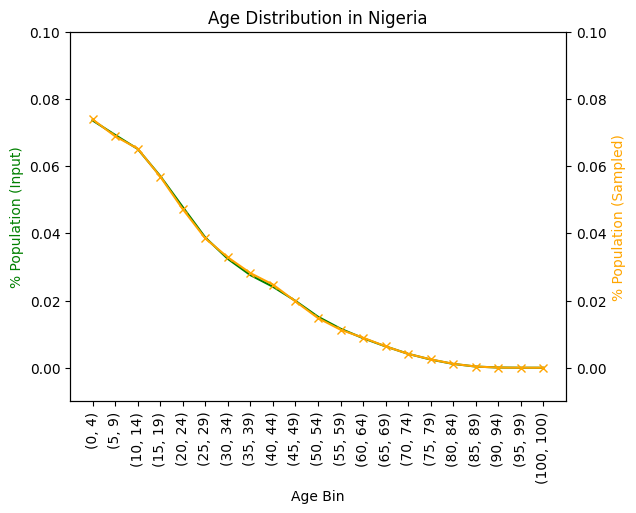Population Pyramids¶
The AliasedDistribution class provides a way to sample from a set of options with unequal probabilities, e.g., a population pyramid.
The input to the AliasedDistribution constructor is an array of counts by bin as we would naturally get from a population pyramid (# of people in each age bin).
AliasedDistribution.sample() returns bin indices so it is up to the user to convert the values returned from sample() to actual ages.
Expected format of the population pyramid CSV file for load_pyramid_csv():
Header: Age,M,F
start-end,#males,#females
start-end,#males,#females
start-end,#males,#females
…
start-end,#males,#females
max+,#males,#females
E.g.:
Age,M,F
0-4,9596708,9175309
5-9,10361680,9904126
10-14,10781688,10274310
15-19,11448281,10950664
…
90-94,757034,1281854
95-99,172530,361883
100+,27665,76635
load_pyramid_csv() returns a 4 column NumPy array with the following columns:
0 - Lower bound of age bin, inclusive
1 - Upper bound of age bin, inclusive
2 - number of males in the age bin
3 - number of females in the age bin
Example¶
import numpy as np
from laser_core.demographics import load_pyramid_csv, AliasedDistribution
import importlib.util
import os
MCOL = 2
FCOL = 3
MINCOL = 0
MAXCOL = 1
# Access the bundled file dynamically
laser_core_path = importlib.util.find_spec("laser_core").origin
laser_core_dir = os.path.dirname(laser_core_path)
pyramid_file = os.path.join(laser_core_dir, "data/us-pyramid-2023.csv")
pyramid = load_pyramid_csv(pyramid_file)
sampler = AliasedDistribution(pyramid[:, MCOL]) # We'll use the male population in this example.
n_agents = 100_000
samples = sampler.sample(n_agents) # Sample 100,000 people from the distribution.
# samples will be bin indices, so we need to convert them to ages.
bin_min_age_days = pyramid[:, MINCOL] * 365 # minimum age for bin, in days (include this value)
bin_max_age_days = (pyramid[:, MAXCOL] + 1) * 365 # maximum age for bin, in days (exclude this value)
mask = np.zeros(n_agents, dtype=bool)
ages = np.zeros(n_agents, dtype=np.int32)
for i in range(len(pyramid)): # for each possible bin value...
mask[:] = samples == i # ...find the agents that belong to this bin
# ...and assign a random age, in days, within the bin
ages[mask] = np.random.randint(bin_min_age_days[i], bin_max_age_days[i], mask.sum())
# in some LASER models we convert current ages to dates of birth by negating the age
# dob = -ages
Nigeria¶
The population pyramid for Nigeria is available from <TBD>.
Source: https://www.populationpyramid.net/nigeria/2024/

